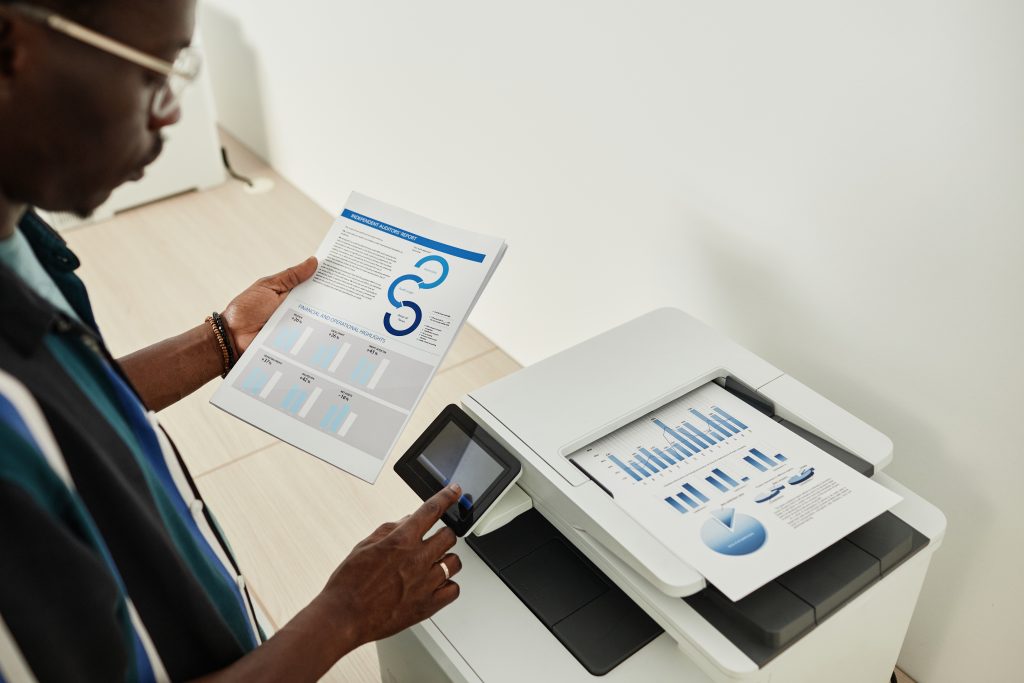Printing output refers to the final result of a printing process, whether it be on paper or another medium. It is essentially the tangible representation of a digital file or document that has been printed using a printer. The quality of the printing output is crucial, as it reflects the professionalism and attention to detail of a business or individual. However, achieving error-free printing output can be a challenge, as numerous factors can contribute to inconsistencies or defects in the final print. To ensure a flawless result, it is important to utilize appropriate tools and techniques to address issues such as color accuracy, file compatibility, print settings, and error management. By employing the right tools and following best practices, it is possible to achieve error-free printing output that meets the highest standards of quality and professionalism.
Understanding Color Space
Color space is a fundamental concept in printing that determines the range of colors available for reproduction. Each device, such as a printer or monitor, has its own specific color space. Understanding color space is crucial for achieving error-free printing output, as it ensures that the colors on the print match what is seen on the screen. There are various color spaces, such as RGB (Red, Green, Blue) and CMYK (Cyan, Magenta, Yellow, Black), each with its own advantages and use cases. RGB is commonly used for digital displays and web graphics, while CMYK is preferred for print materials. By selecting the appropriate color space and ensuring accurate color reproduction, businesses can achieve optimal color accuracy and a visually stunning final print.

Printer Drivers and Models
Printer drivers play a crucial role in ensuring error-free printing output. These software programs act as a communication interface between the computer and the printer, allowing them to exchange information and commands efficiently. Printer drivers provide the necessary instructions to the printer on how to process the print job, such as paper size, resolution, and color management settings. A compatible and up-to-date printer driver is essential for optimal performance and compatibility with different operating systems. It ensures that the printer functions properly and produces accurate and high-quality prints. Additionally, choosing the right printer model is vital for achieving the desired printing results. Different printer models have varying capabilities, such as print speed, quality, and color accuracy. Considering the specific requirements of your printing needs and selecting a printer model that aligns with those requirements can greatly contribute to achieving error-free and professional printing output.
Setting Up A Default Printer
Setting up a default printer on your computer can streamline your printing process and ensure that the right printer is always selected for your printing needs. By designating a default printer, you eliminate the hassle of manually selecting the correct printer each time you want to print something. This convenient feature is especially useful if you frequently print from the same printer or if you have multiple printers connected to your computer. In this article, we will guide you through the steps to set up a default printer on Windows and Mac operating systems. By following these simple instructions, you can ensure that your printing output is error-free and efficiently directed to the right printer every time you hit that print button. So let’s get started with the setup process and make your printing experience smoother and more convenient.
Troubleshooting Common Printer Issues
Having an error-free printing output is essential for every user, whether it’s for personal or professional use. However, printers can sometimes encounter various issues that can hinder their performance. In this article, we will discuss some common printer issues and provide troubleshooting tips to ensure a smooth printing experience.
1. Printer Not Responding:
One of the most common printer issues is when it stops responding or becomes unresponsive. This can be due to various factors such as a faulty connection, outdated printer drivers, or a paper jam. To troubleshoot this issue, start by checking the printer’s connection to your computer and ensuring that it is properly plugged in. Next, update the printer drivers to the latest version, as outdated drivers can often cause compatibility issues. Finally, check for any paper jams or obstructions in the printer and clear them out if necessary.
2. Poor Print Quality:
Another common issue users encounter is poor print quality, which can result in blurry or smudged prints, faded colors, or streaks on the paper. To troubleshoot this issue, start by checking the printer’s ink or toner levels and replacing them if necessary. Also, ensure that you are using the correct type of paper for the printer. Cleaning the printer heads or running a print head alignment test can also help improve print quality. Additionally, check the printer’s settings to ensure that the print quality is set to the desired level.
3. Paper Jams:
Paper jams can be frustrating and can disrupt your printing tasks. To troubleshoot this issue, start by turning off the printer and carefully removing any stuck paper. Avoid pulling the paper forcefully, as it can damage the printer. Once the paper jam is cleared, check the paper tray for any obstructions or misaligned paper. Ensure that the paper is loaded correctly and is within the recommended paper capacity. Regularly cleaning and maintaining the printer’s paper feed rollers can also prevent paper jams.
4. Connectivity Issues:
Connectivity issues can occur when your printer is not properly connected to your computer or network. To troubleshoot this issue, check the printer’s connection cables and ensure that they are securely plugged in. If you are using a wireless printer, make sure that it is connected to the correct network and has a stable Wi-Fi connection. Restarting your router or modem can sometimes help resolve connectivity issues. Additionally, updating the printer drivers or reinstalling them can also improve the printer’s connection.

Conclusion
In conclusion, error-free printing output is crucial for achieving accurate and professional print results. By understanding color spaces and utilizing the appropriate tools and techniques, errors can be minimized, ensuring visually appealing and high-quality print materials.


Average Rating